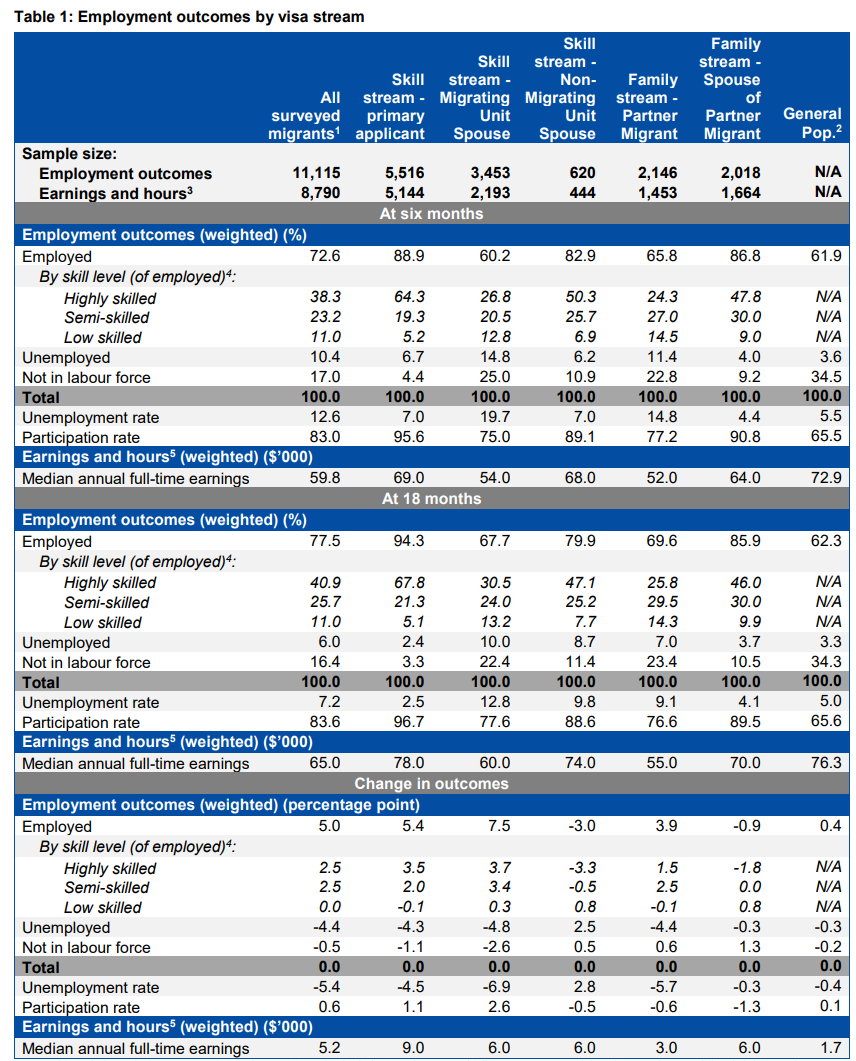One of the most pervasive myths of Australia’s immigration program is that migrants are more productive and earn more than the Australian-born population.
This myth was encapsulated in the Australian Treasury’s immigration propaganda report, Shaping a Nation, which stated the following:
Parham et al. (2015) find that migrants earned a 6 per cent wage premium over the Australian-born due to their propensity to work on average in more skilled jobs…
Skilled migrants who have been the focus of Australia’s modern migration program earn significantly higher incomes…
These claims are comprehensively debunked by the empirical data from the Department of Home Affairs’ Continuous Survey of Australia’s Migrants. This survey shows that recent permanent migrants experienced higher rates of unemployment and are paid less than the general population:

Permanent migrants are paid less than the general Australian population and experience higher rates of unemployment.
Of Particular note:
- Median annual full-time earnings of recent migrants at six months was $13,100 (18%) below the general population in 2018, and $11,300 (15%) below the general population at 18 months;
- The unemployment rate of surveyed recent migrants was 12.6% at six months and 7.2% at 18 months, with both above the general population (5.0%) in 2018.
- Even primary skilled migrants were paid $3,900 less than the general population at six months and only $1,700 more after 18 months. But their migrating spouses were paid far less than the general population at both time periods.
Remember, the general population includes unskilled workers, which necessarily drags the median earnings figure down. So, for recent ‘skilled’ primary migrants to paid less at six months and only slightly more at 18 months (with their migrating partners also earning far less) is a damning indictment of Australia’s purported ‘skills-based’ migration system.
The below job advertisement for a Head of Treasury position at Union Bank of India in Sydney may help to explain why ‘skilled’ migrants are paid so poorly:
As you can see, this “senior role” is paying a measly $95,000. When I joined Goldman Sachs in January 2007 as a mid level Treasury Regulatory Analyst, I was paid $85,000. So you can understand why I spat my coffee out when I saw this ad.
If you think that’s bad, check out the below ad for the CEO position at the same financial institution:
These types of low-ball ads are used by firms across the board to circumvent labour market testing rules. Basically, firms advertise a position at a low pay rate relative to the required skillset. And when no local worker applies they hire a migrant willing to work for below market salaries to obtain permanent residency.
In this regard, labour market testing is little more than an administrative hurdle that can be easily gamed, as explained by Abul Rizvi:
For years, however, the Government has resisted setting a much higher minimum salary for skilled temporary entry while the unions have insisted on “labour market testing”.
The former is crucial to both protecting job opportunities of Australians and limiting the risks of exploitation of temporary entrants. But the latter, while having a laudable objective, is in practice little more than a bureaucratic charade…
The end result is that ‘skilled’ visas are ruthlessly abused by employers, market wages are undercut, and Australia’s so-called skills-based migration system is defrauded.



